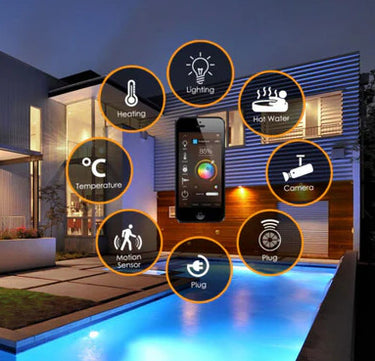1. Choose the Right Hub
A smart home hub serves as the central command for your devices. Research and select a hub that supports all your devices and protocols (like Zigbee, Z-Wave, or Wi-Fi). Popular options include SmartThings, Amazon Echo, and Google Nest Hub. A good hub ensures seamless integration and control.
2. Prioritize Security
Security is paramount in any smart home. Use strong, unique passwords for each device and enable two-factor authentication whenever possible. Regularly update your devices to protect against vulnerabilities. Consider installing a smart security system for added peace of mind.
3. Optimize Your Wi-Fi Network
A stable and fast internet connection is crucial for smart home devices. Position your router centrally, use a mesh network for larger homes, and limit the number of devices connected to a single network. This ensures that all devices receive a strong and reliable signal.
4. Create Smart Scenes and Routines
Leverage the automation capabilities of your devices by creating scenes and routines. For example, set up a “Good Morning” routine that gradually brightens your lights and starts your coffee maker. Customizing your daily routines enhances convenience and efficiency.
5. Label and Organize Devices
Keeping track of multiple smart devices can be challenging. Label each device clearly in your app and organize them by room or function. This makes it easier to control them, especially when using voice commands.
6. Utilize Energy Monitoring
Many smart devices come with energy monitoring features. Use these tools to track your energy consumption and identify devices that consume the most power. This can help you make informed decisions about when to use specific devices or consider energy-efficient alternatives.
7. Integrate Voice Control
Voice assistants like Amazon Alexa, Google Assistant, Apple Siri and Orvibo make controlling your smart home effortless. Set up voice commands for your devices and create custom commands for complex actions. This hands-free control adds an extra layer of convenience.
8. Regularly Update Your Devices
Keep your smart devices updated with the latest firmware to enhance security and functionality. Manufacturers often release updates that fix bugs or add new features, so make it a habit to check for updates regularly.
9. Plan for Future Expansion
When setting up your smart home, think about future needs. Choose devices that are compatible with various ecosystems, allowing for easy integration of new technologies as they become available. This foresight can save you time and money in the long run.
10. Stay Informed About New Technologies
The smart home landscape is constantly evolving. Stay informed about the latest advancements and trends in smart technology through blogs, forums, and news articles. Being aware of new products and features can help you make the best choices for your home.







